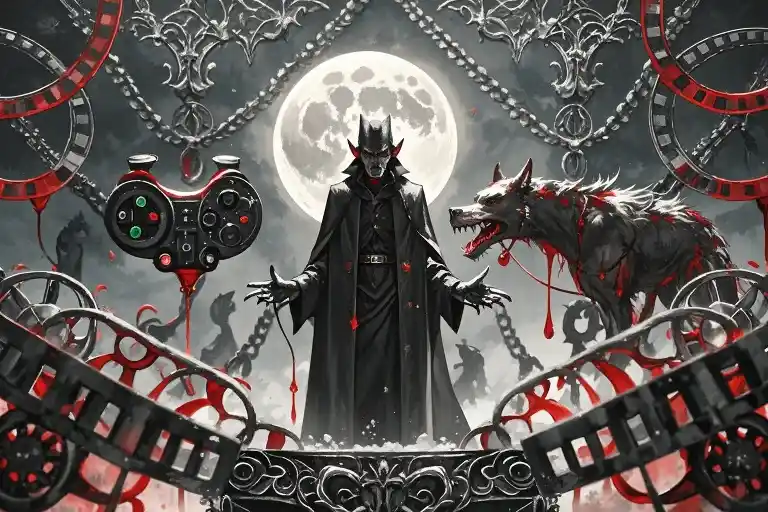Let me confess something awkward upfront: I walked out of Nosferatu feeling like I’d survived a fever dream rather than watched a movie. You know that disorientation when you binge-play Bloodborne until 3 AM, and reality starts oozing Victorian-era dread? Multiply that by ten.
But here’s the magic – while my brain still struggles to map the film’s logic, my bones remember its chill. Director Robert Eggers (the mad genius behind The Witch) didn’t just make a vampire flick. He crafted a sensory ritual that bleeds into your psyche like ink on parchment. Imagine if Tim Burton’s storyboards mated with H.R. Giger’s nightmares, then raised their lovechild in a cathedral made of shadows. That’s Nosferatu.
When Film Rejects Your Popcorn
We’ve been trained to expect movies to behave – three acts, relatable heroes, closure. Nosferatu laughs at these rules like a gargoyle spitting rainwater. Characters? More like haunted figurines moving through a living diorama. Plot? Try navigating a labyrinth where walls whisper and floorboards creak secrets.
It’s not bad storytelling. It’s rebellion.
Eggers treats cinema like a FromSoftware game designer:
- Environmental Storytelling Over Exposition
That crumbling castle isn’t a set – it’s a puzzle box. The way moonlight slices through rotted curtains tells you more about vampiric decay than any dialogue could. - Death as Teacher
Just as Bloodborne kills you repeatedly to teach combat rhythms, Nosferatu lets scenes linger uncomfortably long. You squirm. You check your watch. Then – click – the discomfort becomes the lesson. - Lore Hidden in Plain Sight
Notice the moth-eaten tapestry behind Count Orlok? Its missing threads mirror Yharnam’s erased history in Bloodborne. Neither explains itself; both demand your curiosity.
The Beauty of Controlled Chaos
Let’s address the elephant in the crypt: Yes, parts feel “unfinished.” A friend muttered, “It’s like watching smoke form shapes.” Exactly! Traditional narrative is fire – direct, warm, consuming. Eggers gives us smoke – elusive, patternless, intoxicating.
Why This Works:
- Your brain switches from passive watching to active archaeology
- Every viewer becomes a co-creator, filling gaps with personal fears
- Repeat viewings (or playthroughs) reveal new layers
Gaming the Silver Screen
Here’s where things get deliciously meta. Modern horror often borrows from games (Five Nights at Freddy’s, anyone?), but Nosferatu integrates gaming’s DNA:
| Film Technique | Gaming Parallel | Effect |
|---|---|---|
| Fixed-angle shots | Fixed camera survival horror | Vulnerability amplified |
| Asynchronous sound | Muffled enemy footsteps | Paranoia trigger |
| Monochromatic palette | Retro game aesthetic | Timeless unease |
Your Turn to Play
Feeling lost? Good. Here’s your starter guide to enjoying art that resists easy digestion:
- Embrace the Fog
Like approaching Bloodborne’s first werewolf – you’re supposed to feel overwhelmed. Let the atmosphere marinate your nerves. - Hunt the Details
That rusted chalice? The伯爵’s nail curvature? Treat them like game lore items – insignificant alone, world-building together. - Die to Live
Abandon plot expectations. Let scenes “kill” your assumptions. Resurrection brings clarity.
Why We Crave the Crypt
In our TikTok-speed world, Nosferatu’s deliberate obscurity feels radical. It’s a velvet-gloved middle finger to algorithms – art that can’t be summarized, only experienced. The film’s greatest trick? Making you nostalgic for mysteries larger than yourself.
So yes, Robert Eggers is a beautiful sicko. And we’re all richer for his madness.

